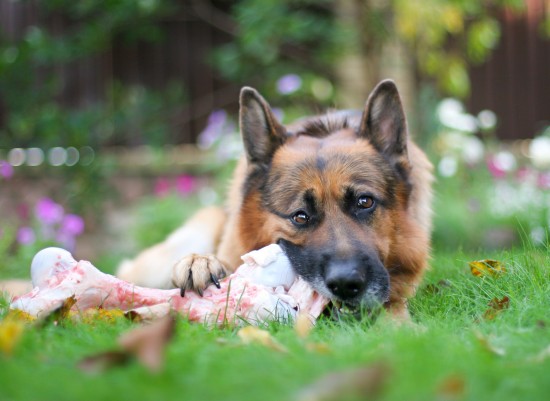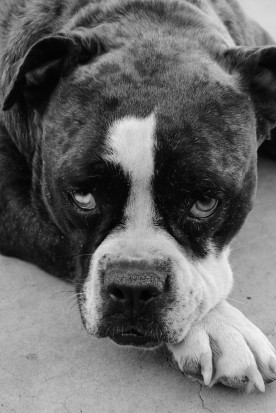One of the advantages of owning a small dog is the ability to take him on the airplane when you travel. But there are risks to be aware of and protocol to follow.
One of the greatest advantages of owning a small dog is the ability to take him onto an airplane with you when you travel. But there are risks when flying a dog on a commercial flight posed, mostly, by the way dogs are handled by airport employees as well as the dog’s unattended experience in a plane’s cargo hold. However, the risks are very slight to a dog who is with you and under your control every minute of your flight. Keep in mind that, if you are going to expose your dog to air travel, there are many things you need to know and contingencies to prepare for to make the dog’s flight as enjoyable as possible.
Be aware that there is no be-all-end-all rule regarding the size of dogs allowed to be carried on a plane but the rules concerning the dog’s carrier and how well the dog fits inside it are. Every airline has different maximum dimensions for soft-sided carriers and kennels. You can find stated maximum carrier heights as small as 7.5” to as large as 11”. The maximum for the depth of the carrier vary quite a bit as well which can range from 11” to 19” in length. In addition, some airlines also have a weight limit for the pet and the carrier. For example, an airline may state that the combined weight of the dog and its carrier cannot exceed 20 pounds.
Dogs in a carrier should be able to naturally and comfortable stand up, turn around, and lie down. Airline representatives can refuse to allow you and your dog to board if they feel the kennel is too small and is causing, or could potentially cause, the dog undue distress. But size and weight considerations are not all; there are federal regulations regarding the minimum age for puppies who are carried on a plane. Puppies must be at least eight weeks old and weaned at least five days before flying.
To my knowledge, no airline website provides the option of bringing a pet on board a flight to the traveler. First, you book the flight for yourself then call the airline to reserve a place for your dog. Airlines allow only a limited number of pets on any given flight, therefore, if the one you booked has already reached its capacity for pets, you will have to choose a different flight. The airline will not charge a “change fee” for this but if you’re forced to book a higher cost flight, you have to pay the higher price. It’s a good idea to book your flight as early as possible and call the airline immediately to reserve a spot for your dog. When making a reservation for your dog on your flight, ask the agent whether they require any health certificates or vaccinations for your dog. A veterinarian issued health certificate, stating your dog has been examined at least 10 days before your flight, is required for all international flights but generally not for travel in the United States, with a couple of exceptions such as Hawaii and Alaska.
All airlines charge a carry-on fee for your dog and the price has gone up in recent years. The fee is not dependent on the length of the trip but is a flat fee that varies from airline to airline, anywhere from $125 to $200 one way. This pet fee is paid at the counter when checking in for the flight.
After making airline reservations for you and your dog, you should have enough time to get your dog ready to make the trip. It is important for your dog to spend time in a small carrier; to get used to being jostled about and exposed to strange sounds and movement. Dogs who are regularly carried in soft-sided bags are likely to accept the air travel experience with ease. Your dog should be familiar and comfortable in the carrier you plan to use on the trip well before you travel and if you can help it, don’t put him in an entirely new carrier on the day of the trip. During your travel, you may need to take your dog out of and put him back into the carrier several times. In the weeks before the flight, practice asking your dog to enter and exit the carrier in different environments, such as dark, bright, loud, indoors, outdoors, etc. and reward each successful entry and exit with high-value treats and praise.
It’s a good idea to bathe your dog a day or two before your trip. Clip his nails, including the dewclaws, if any, to avoid injury and prevent stress. Your dog should be wearing an ID tag the day of your trip which includes your current contact information. It is best if your dog is micro chipped, in case he manages to get his collar and/or harness off. Make sure the microchip information is up to date.
Do not feed your dog within six hours of a flight to prevent vomiting, urinating or defecating in the carrier. Heeding this recommendation depends on how conditioned your dog is to spending time in the carrier. However, if you’re flying with young puppies or toy breed puppies of any age, do not withhold food before the flight as this adds to the risk of hypoglycemia (low blood sugar) which can be brought on by stress and may result in seizures, listlessness, muscle weakness or staggering, tremors, coma, and even death. Start your day early in order to have enough time to walk your dog so that he eliminates. Once you are at the airport, give him a leisurely chance to urinate one more time before putting him in his carrier.
Should you arrive at the airport with your dog in his carrier and your carrier in hand but are told a mistake has been made and there is no room in the cabin for your dog, however, the airline could put your dog in the cargo area. I recommend that you calmly refuse to allow your dog to be put in the cargo area, even if it means booking another flight. The only possible exception would be if your dog were completely comfortable being in a crate, without you, in an appropriately sized “hard” crate; your dog is a fit, healthy, adult, non-brachycephalic breed, perfect weather conditions (neither at all hot nor at all cold), and the flight isn’t a terribly long one. These are the only conditions under which any dog should be shipped via cargo. As for tranquilizing your dog for air travel, the American Veterinary Medical Association (AVMA) recommends that you do not give tranquilizers to your pet when traveling by air due to increased risk of heart and respiratory problems.
Do not break the rules and let your dog out of his carrier on the plane. He will be far safer when contained and your fellow travelers will be far more comfortable. Even if your dog does vomit or relieve himself in the crate, letting him out will only make a bad situation worse. Wait until deplaning then head for the nearest pet relief station.
When traveling with your pet, it should be a pleasant relief to you knowing both of you have arrived safe and stress-free.

 Swollen Paws In The Dog - Causes And Treatment
Swollen Paws In T
Swollen Paws In The Dog - Causes And Treatment
Swollen Paws In T
 The Raw Food Debate In Dog Feeding Decoded
The Raw Food Deba
The Raw Food Debate In Dog Feeding Decoded
The Raw Food Deba
 The Alapaha Blue Blood Bulldog - A Most Unusual Breed!
The Alapaha Blue
The Alapaha Blue Blood Bulldog - A Most Unusual Breed!
The Alapaha Blue
 Why Does My Guinea Pig Try To Bite Me?
Why Does My Guine
Why Does My Guinea Pig Try To Bite Me?
Why Does My Guine
 Smoking Around Your Dog Can Lead To Canine Lung Cancer
Smoking Around Yo
Smoking Around Your Dog Can Lead To Canine Lung Cancer
Smoking Around Yo